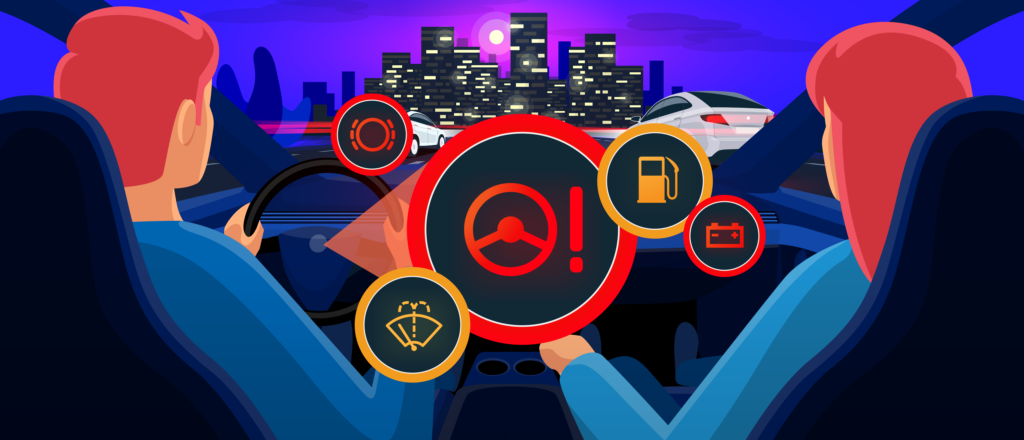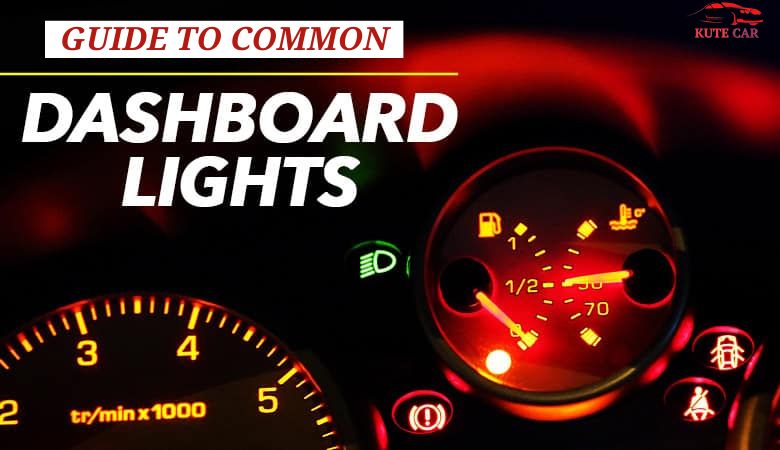The car with squiggly lines and check engine light was introduced in 1990 as a safety feature to prevent skidding and loss of control. If there is a problem with the control module, engine, instrument section, EVAP system, or anything else, your vehicle will only communicate via its dashboard light.
This warning may come as illuminations on your dashboard. A “dashboard light car with squiggly lines” often indicates that you’ve activated the traction control. The traction system prevents the vehicle from sliding, particularly when driving on a hard surface. It’s what it should look like if you go under slippery conditions. It might be that the vehicle’s traction or control panel is malfunctioning.
Stop the vehicle and check the engine and traction control on the dashboard at the same time if you notice anything illuminated while driving the vehicle. In this guide we are going to discuss why cars with squiggly lines and check engine light comes on the dashboard while driving a car.
What’s squiggly lines and Check Engine Light
The traction control comes when driving in the rainy season and on snowy days. The traction control especially tracks your steering wheel and stability when driving in slippery conditions. With the help of electronic sensors on its wheels, traction control follows this. It controls the strength of your vehicle, and the sensors will communicate with your vehicle’s power control module.

It prevents it from sliding, and traction controls reduce the acceleration and brake pressure of the vehicle’s wheels. To help you maintain your car’s stability, it will work alongside the ABS antilock braking system. On your dashboard, the check engine may flash or be consistent. The check engine often indicates several problems with your machine or vehicle’s computer system. The check engine light on your dashboard might be due to a problem with the oxygen sensor, air flow sensor, ignition wire, thermostat, EVAP system, catalytic converters, etc.
What You Need to Know About the Most Common Dashboard Warning Lights
1) CHECK ENGINE
This warning comes on the dashboard with a silhouetted engine symbol which every driver hates. This light is related to your car’s motor and emblems system emblem. It may be a minor issue like a loose wire, an ill-fitting gas cap, a worn solenoid, or a significant problem like something wrong in the engine itself.
If you are driving a car on a regular road and everything is fine, but the light is still illuminated, don’t panic and ignore it. Find the best mechanic to run a diagnostic test and source the problem.
2) BATTERY
The warning on the batteries can be deciphered because they look just like something you need to watch out for. For many car owners, this light conjures up the heart-sinking “whir whir whir” sound of a vehicle trying to start with a flat battery.
Don’t be fooled if the battery light illuminates, but the car starts and drives typically. The battery may have a long term problem or the vehicle’s wiring, alternator, or other electrical components may have a potential problem.
3) COOLANT TEMPERATURE
The warning about the coolant’s temperature indicates that your car is too hot, like a thermometer falling into the ocean. A broken water pump may cause it, the low cooling fluid level within the radiator, a leak or burst coolant hose, or other damage to the heating unit.
These issues must be addressed. Otherwise, they could become much bigger problems for the engines. Like blinking engine light is essentially the same as an overhead car sign and is also dangerous to the running of your car.
4) TRACTION CONTROL AND STABILITY CONTROL
This control indicates the Squiggly line symbol when something is wrong happening. It shouldn’t look like a car going down a rough and curving road, but it does. This warning is frequently seen as the front window of a vehicle with two squiggly lines under it, showing what these systems try to prevent by causing your car to slip and slide across the road.

Remember that the traction and stability control lights will be turned on when the system is switched on. Punch the gas pedal when it’s excessively rainy or snowy; chances are reasonable you’ll see this dashboard light illuminate. It just means that the system’s doing its job.
However, the system may malfunction if it turns on when you drive your car at low speed on wet surfaces. A wheel speed sensor could have been the cause of all this. Many vehicles allow the driver to control these systems using a driving mode selector. The traction and stability control systems can be significantly reduced or disabled by several sports cars‘ most powerful performance settings.
5) BRAKE SYSTEM
We’re all talking about how fast a car accelerates from zero to sixty miles an hour. If the vehicle does not stop in a timely and controlled manner as soon as the brakes are set, it may prove to be dangerous. A common mistake occurs when the driver pulls away with the parking brake engaged, causing this warning light (or one saying “Parking Brake”) to glow. A more troubling culprit could be worn brake pads, low brake fluid levels, or a problem with the anti-lock braking system (ABS).

On a similar theme when it comes to a car’s stopping power, an illuminated ABS light often means there’s an issue with a wheel speed sensor, or problem with connections and wiring that could prevent the anti-lock braking system from activating.
It’s safe to drive without an antilock braking system, unless you have one. Remember that, particularly if panic stop is effected, it is necessary to repair the braking device in order to restore full braking effectiveness.
Conclusion
When your dashboard lights squiggly lines, It’s advisable to take your automobile to a mechanic or examine it as soon as traction control and check engine illumination pop up on your dashboard. Ignoring the two warnings can cause more severe trouble or lead to your vehicle becoming limp.
Regular checks and repairs may prevent the traction control from damaging your engine. Maintaining your vehicle by doing a standard check-up is thus essential. Maintenance will avoid any problems that might arise when the traction controls or check engines are switched off, which could result in an unexpected illumination.
FAQ Regarding The Dashboard Light Car with Squiggly Lines
Q.1) How do I turn off the squiggly lines on my car?
Depending on the vehicle’s model and make, one car will press a button to shut it off. However, in some vehicles, an activated light with a car with squiggly lines combined with the words ‘off’ indicates that the system is disabled. If that light is no longer on, the stability monitoring device will indeed be switched on.
Q.2) Can I fix my stability control system at home?
Modern vehicles with stability control systems use a comprehensive range of components. These constantly communicate with numerous other parts of a car to work. No, modifying your vehicle stability control by yourself is not recommended.
Q.3) Is it true that I can drive faster if I turn off the stability control?
You could disable the stability control to allow a skilled driver to perform specific actions to increase your lap time on the racetrack. However, it is recommended that the stability indicator should be left on if you drive on a regular public road.




